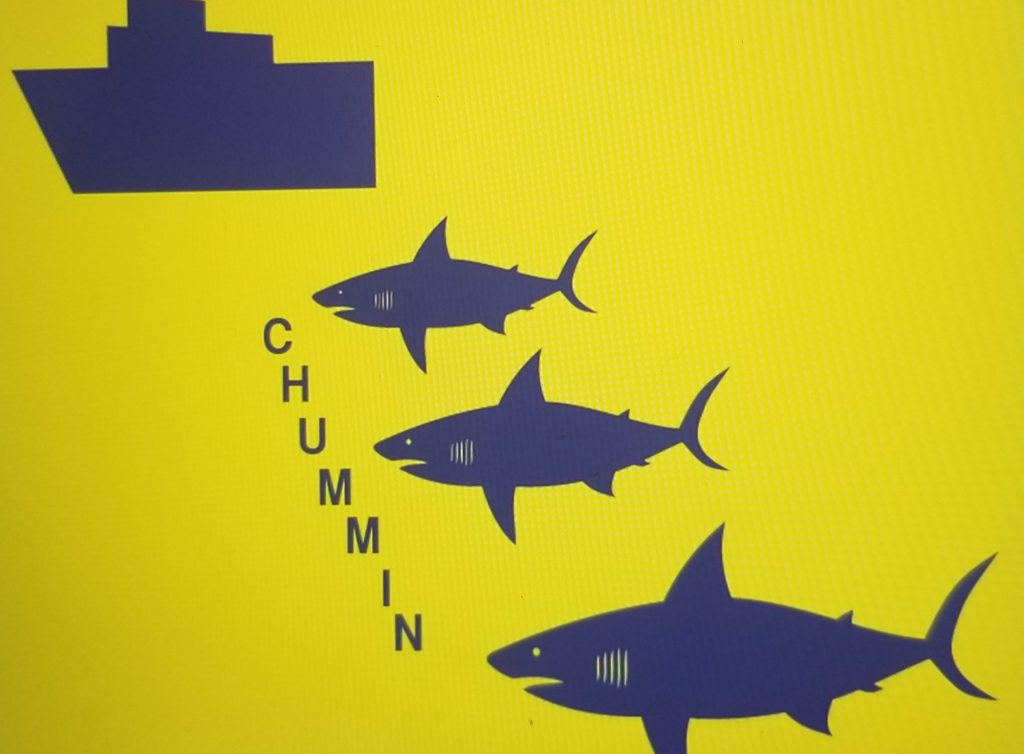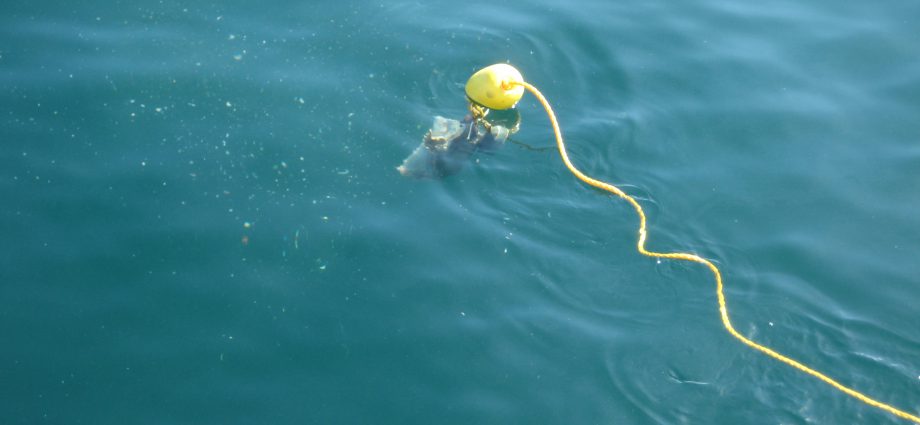Fishing for sharks and swimming at the same beach is not a very good combination. Especially when fishermen use chum to lure the sharks in. Warning flags could warn beachgoers and swimmers and prevent accidents. Time for a code flag for chumming?
Blood attracts sharks and the more sharks in the water, the bigger the chance for an accident for anyone swimming in the same spot. Nine years ago a diver in Grand Bahama had this unfortunate experience. He almost had his arm bitten off by a shark after another boat began dumping chum into the water around him at a dive spot called Shark Junction. The crew of this glass bottom boat ignored the diver flag.
Shark feeding
Ten years earlier another diver lost part of his leg in a shark attack at the same spot, where they were shark feeding. He sued the hotel that organized the glass bottom boat shark trips for $25 million. The diver said later that he never would not have gone in the water if he had known they were feeding sharks right off the beach. It was later settled, but the shark feeding was temporarily stopped. Only to make another victim ten years later. In 2015 two teens were attacked by sharks off Oak Island, North Carolina, both losing arms. Shark fishing was allowed off the beach at the time.
Although many marine experts doubt if chumming changes the behaviour of sharks in the nearby area, the practice has rattled many a surfer, swimmer or kayaker. Surfers in Cape Town, South Africa sounded alarm after one of them was attacked by a great white, and in Florida surfers asked for more communication from researchers who were luring great whites off the coast.

Chum Flag
A special designed chum flag could be the answer for this, says Jerry Taggart who has been working for quite a long time to promote this special warning flag. “My goal is to establish a code flag for chumming globally, promoting safety and sportsmanship through awareness, with a personal commitment to have a portion to benefit the marine environment. “My goal is to help generate revenue for research, education and projects of the marine environment and that’s my personal goal, but I can only do that through sales of flags and other items.” This year he started his company. “It’s in the core business plan to give back long after I’m gone.”
In 1997 he got the idea for a chum flag while listening to a radio show. someone called a radio show called Let’s talk Hookup and asked how can you tell when a boat is chumming?. The answer was you look for the slick. But attracting sharks for fishing in some parts of the world means putting others at a higher risk of encountering sharks that aggressively look for food. There are a lot of reasons why people may be attacked by a shark. Eliminating one possible aspect is a good thing. Wouldn’t you like to know if someone is attracting sharks with chum or burley in the boat next to you before you and your family dive in?”
Safety of life at sea
The end goal is to get the chumming flag adopted by the International Maritime Organization (IMO.org) under their Safety of life at sea (SOLAS) program. “Just like they adopted the two diver flags in the ‘70’s”, he says. “Yes I’ve been working on this idea for a while but I feel it’s worth the effort.” Taggart is not alone in his work to get the flag established. The Shark Research Institute in the USA, Feike Management Advisory firm in South Africa, Fishyology fishing organization Malaysia and Shark Researcher in New Zealand all agree as well. But it’s a long road.
More information: http://www.chummingflag.com

